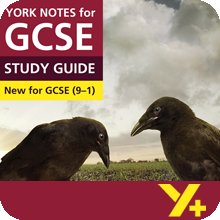Your Assessment
Read through the answer below and decide what grade to give it. Use the Hints & Tips to help you make your assessment.
How does Orwell use the character of Boxer to explore ideas about power in Animal Farm?
Write about:
- what Boxer says and does
- how Orwell uses the character of Boxer to explore ideas about power.
Orwell presents Boxer as someone who is powerful and loyal. He is one of the ‘good’ characters in the book and that is something Orwell makes use of later in the story.
From the start, we are told that Boxer is a big creature with ‘vast hairy hoofs’ that he sets down ‘with great care lest there should be some small animal concealed in the straw.’ The fact that he takes ‘great care’ not to hurt smaller creatures shows how considerate Boxer is. We also see this when he thinks he has killed the stable-lad. This makes us feel sympathetic towards him. He is strong but kindhearted.
Orwell also shows that Boxer is loyal. We can see this when Boxer is described as one of the revolution’s most ‘faithful disciples’. The word ‘faithful’ tells us that Boxer simply follows what the pigs say because he trusts them, like people follow religions. He and Clover have ‘great difficulty in thinking anything out for themselves’ – although he is loyal he can’t think for himself and has to rely on the pigs, which Orwell shows later is a weakness.
Orwell also demonstrates this loyalty when Boxer is attacked by the dogs at the meeting. It seems to happen out of nowhere, as the attack is ‘to the animals’ amazement’. Even when the dogs strike against Boxer, he looks to Napoleon to see what to do. To the animals, the attack is a shock, they think the dogs have gone ‘mad’ but we know it has been planned: earlier Squealer gave Boxer an ‘ugly look’ when he questioned Squealer’s criticism of Snowball at the Battle of the Cowshed so we know that Napoleon planned the attack to get rid of Boxer but didn’t expect Boxer to be powerful enough to defeat three dogs. This threat is repeated when we see Boxer being taken away from the farm and to the knacker’s. Once he is of no use to Napoleon, he gets rid of Boxer. So we see that Napoleon is ruthless and that once Boxer’s physical power is gone there is nothing left to protect him.
One of the most upsetting parts of the book is Boxer’s removal from the farm in Chapter 9. Even when he collapses, he thinks about the farm first, telling the other animals that he has left enough stone to build the rest of the windmill. So this makes what happens to him even worse – especially as the pigs sell him for enough money to buy a crate of whisky. It doesn’t matter if Boxer is ‘one of the most loyal workers on the farm’, once he has collapsed the pigs just use him another way.
Orwell also uses Boxer to show us how powerful the working classes can be. ‘Animal Farm’ is an allegory and Boxer represents the working class, ordinary people. Orwell uses Boxer to show us that working people don’t know their strength and that they can be easily exploited by ruthless leaders, in the same way that Orwell thought that the Russian people had been exploited by Stalin. Boxer represents workers like Alexey Stakhanov, who were praised for their very hard work.
In conclusion, Orwell wants us to see Boxer as the hero of the story. Orwell uses the fact that we sympathise with the loyal, hardworking, caring Boxer to make us realise the suffering that the ordinary Russian working class had to endure as a result of Stalin’s actions. Without Boxer, Orwell’s satire would be much less effective.
